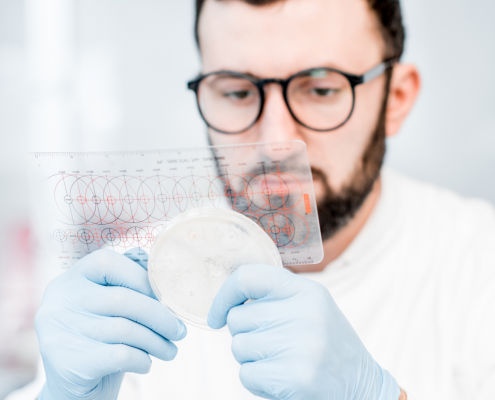Enlisting good bacteria in the fight against pathogens in food processing
Maribel Alonso, United States Department of Agriculture
Disease-causing bacteria like Escherichia coli O157:H7 and Salmonella enterica could survive sanitization in beef processing facilities. Scientists and collaborators in the United States Department of Agriculture’s (USDA), Agricultural Research Center (ARS) are investigating how this happens while also seeking approaches to solve the problem.
E. coli O157:H7 (a Shiga toxin-producing E. coli) and S. enterica are two disease-causing bacteria (pathogens) associated with foodborne illnesses in the United States. Because these pathogens can make people sick through contaminated food, scientists are researching effective and economical ways to lower risks of cross-contamination at food processing facilities.
More research is needed to understand the interaction of multiple species of bacteria present in different processing plant environments and how they vary from one facility to another—reflecting different locations, temperatures, and other factors. Can we develop a more environmentally friendly and cost-effective approach against pathogens in food processing facilities?
“We understand how crucial it is for the food industry to have measures that will effectively prevent the formation of these biofilms and reduce the risk of food contamination and protecting public health,” said Wang.
> Source: PHYS.ORG



 Credit: Canva @ steceren /CC0 Public Domain
Credit: Canva @ steceren /CC0 Public Domain Canva @ rimmabondarenko /CC0 Public Domain
Canva @ rimmabondarenko /CC0 Public Domain